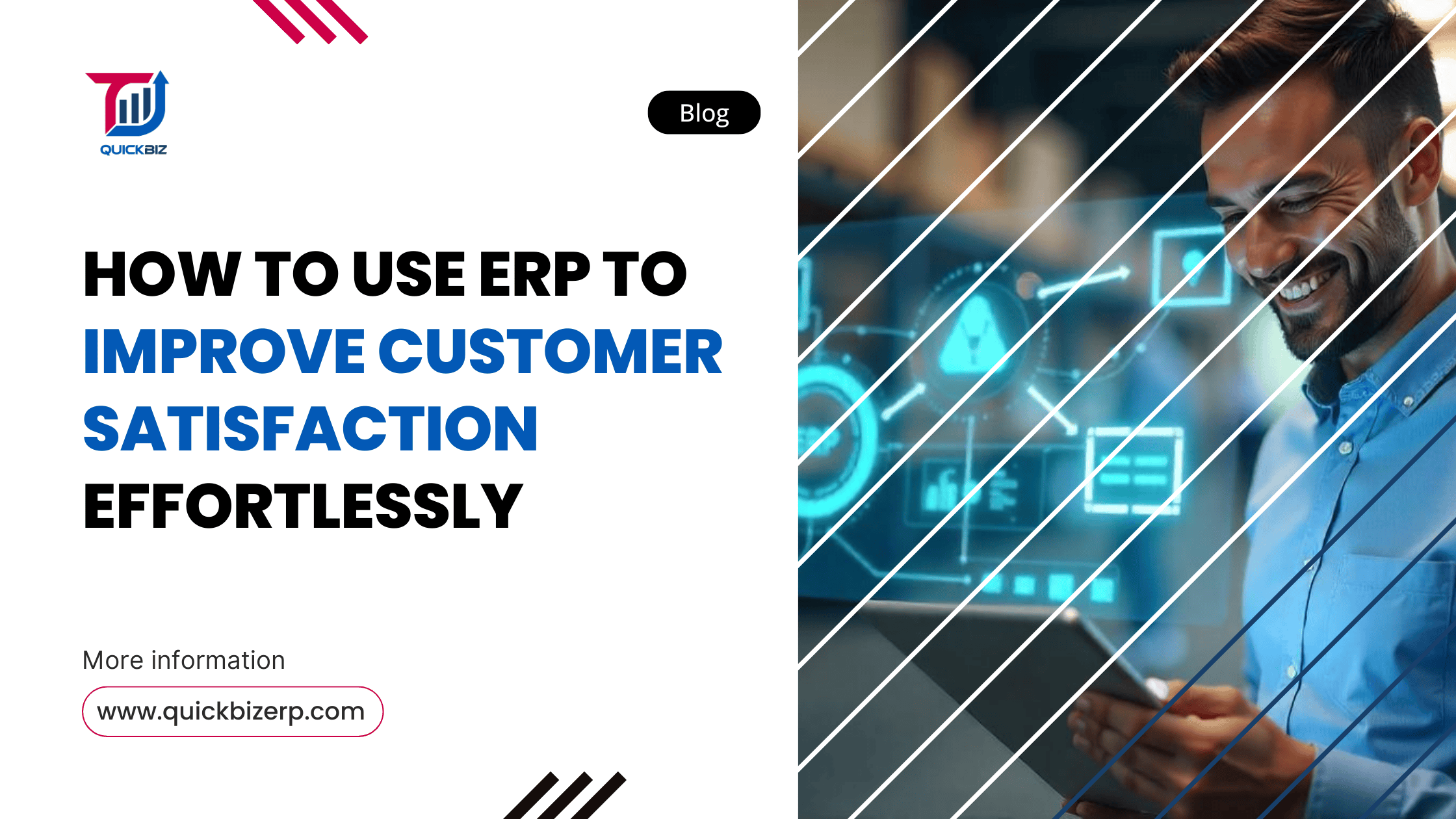How to Use ERP to Improve Customer Satisfaction Effortlessly

Introduction
In today’s fiercely competitive business environment, customer satisfaction isn’t just an ideal—it’s the cornerstone of sustained success. With rising customer expectations and an increasing demand for personalized services, businesses face constant pressure to deliver exceptional experiences. Technology, particularly Enterprise Resource Planning (ERP) systems, has emerged as a game-changing solution for meeting these demands. ERP streamlines processes, enhances efficiency, and aligns operations to ensure customers receive the service they deserve. In this blog, we’ll explore how ERP can improve customer satisfaction effortlessly, from streamlining order processing to enabling personalized interactions.
1. Understanding ERP and Its Impact on Customer Satisfaction
What is ERP?
Enterprise Resource Planning (ERP) is a software solution designed to integrate and manage a company’s core business processes, including finance, inventory, sales, and customer relationship management. By centralizing data and automating workflows, ERP systems provide businesses with real-time insights and control over their operations.
ERP as a Centralized Hub
Think of ERP as the nerve center of your business. It connects departments, eliminates silos, and ensures seamless communication. When processes are unified, businesses can respond quickly to customer demands, minimize errors, and improve overall efficiency—all of which contribute to enhanced customer satisfaction. Learn more about how ERP streamlines business operations and boosts efficiency.2. Key Ways ERP Improves Customer Satisfaction
a) Streamlined Order Processing
One of the primary causes of customer dissatisfaction is order errors or delays. ERP systems address this by automating order management processes and ensuring real-time data synchronization across departments.
- Example: A manufacturing company uses ERP to track orders from placement to delivery, reducing errors caused by manual data entry. With real-time inventory updates, customers are informed of stock availability instantly, enhancing transparency and trust.
b) Faster and Timely Deliveries
Timely delivery is crucial for customer satisfaction. ERP systems optimize supply chain management by automating logistics processes and enabling better demand forecasting.
- Example: A retail business implemented ERP to automate delivery schedules and route planning, reducing delivery times by 20%. The result? Happier customers and a stronger reputation.
c) Personalized Customer Experiences
Today’s customers expect businesses to know their preferences and cater to their unique needs. ERP systems consolidate customer data, providing insights into buying behavior and preferences.
- Example: An online retailer uses ERP to analyze purchase histories and send personalized offers to customers, leading to increased loyalty and repeat business.
d) Efficient Complaint Management
Resolving customer complaints quickly and efficiently is key to maintaining satisfaction. ERP systems streamline after-sales service by automating ticket tracking and resolution workflows.
- Example: A service-based company implemented ERP to manage customer complaints, resulting in a 50% reduction in resolution times and higher satisfaction scores. For a smooth ERP implementation, consider proven best practices.
3. Real-Life Success Stories
Retail Chain Reduces Delivery Times
A global retail chain leveraged ERP to optimize its supply chain and improve inventory visibility. By automating order processing and delivery schedules, the company achieved a 30% reduction in delivery times, significantly enhancing customer satisfaction and retention. Explore how ERP can drive scalability and efficiency in similar scenarios.
Manufacturing Firm Boosts Customer Loyalty
A manufacturing firm used ERP to integrate its sales and production departments. This ensured accurate delivery timelines and reduced order errors, resulting in a 25% increase in customer retention rates within a year.
4. Actionable Tips to Maximize ERP Benefits for Customer Satisfaction
- Invest in User Training: Ensure your team understands how to use the ERP system effectively. Knowledgeable employees can maximize its capabilities to improve customer service.
- Customize ERP Features: Tailor the ERP system to align with your business’s customer-centric goals. For example, configure features to automate personalized emails or alerts for customers. For more insights, discover ways to simplify ERP maintenance.
- Leverage Analytics: Use ERP’s data analysis tools to identify trends, predict customer needs, and make data-driven decisions to enhance satisfaction.
Conclusion
In an era where customer satisfaction defines success, ERP systems provide businesses with the tools to streamline operations, personalize interactions, and exceed expectations. By integrating and automating key processes, ERP enables companies to deliver exceptional service effortlessly. Whether it’s faster deliveries, error-free order processing, or tailored customer experiences, the impact of ERP on customer satisfaction is undeniable.

